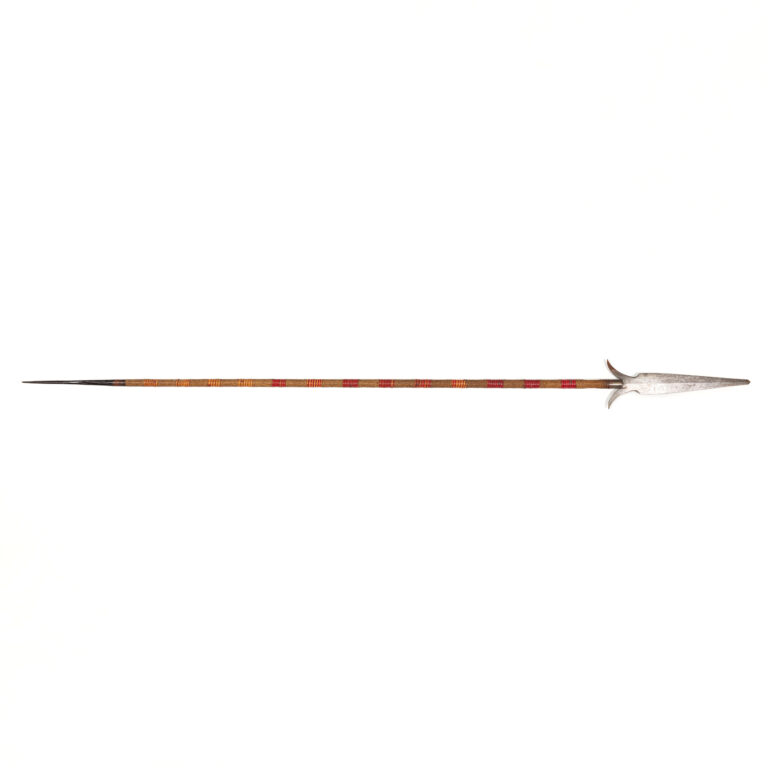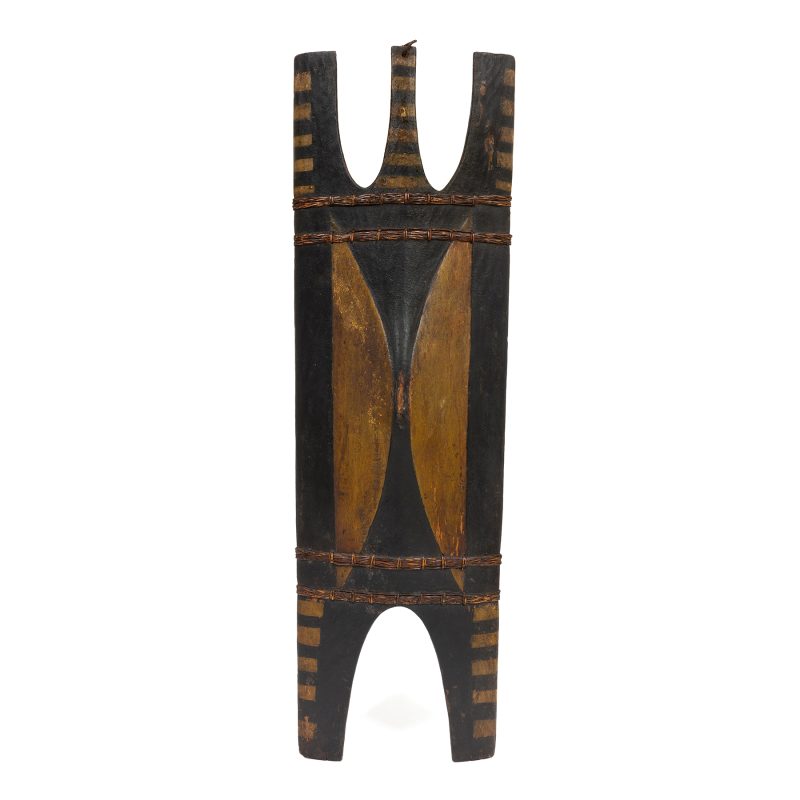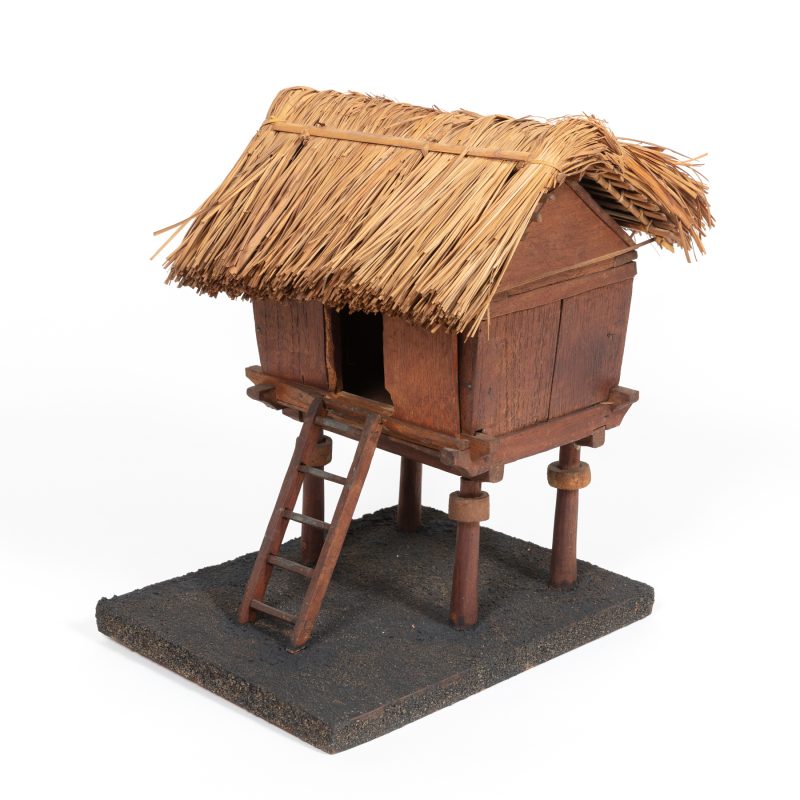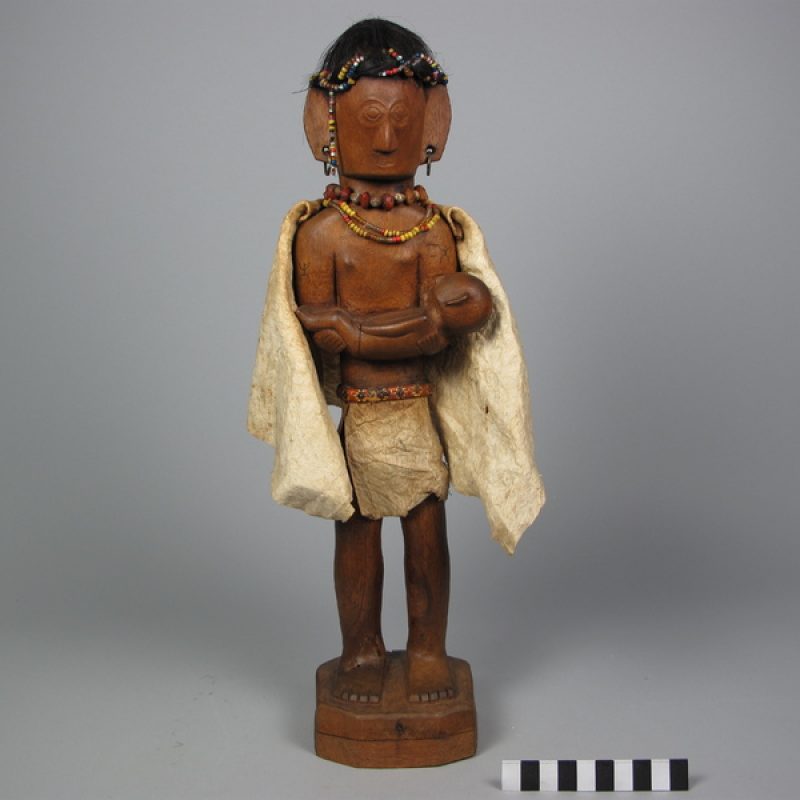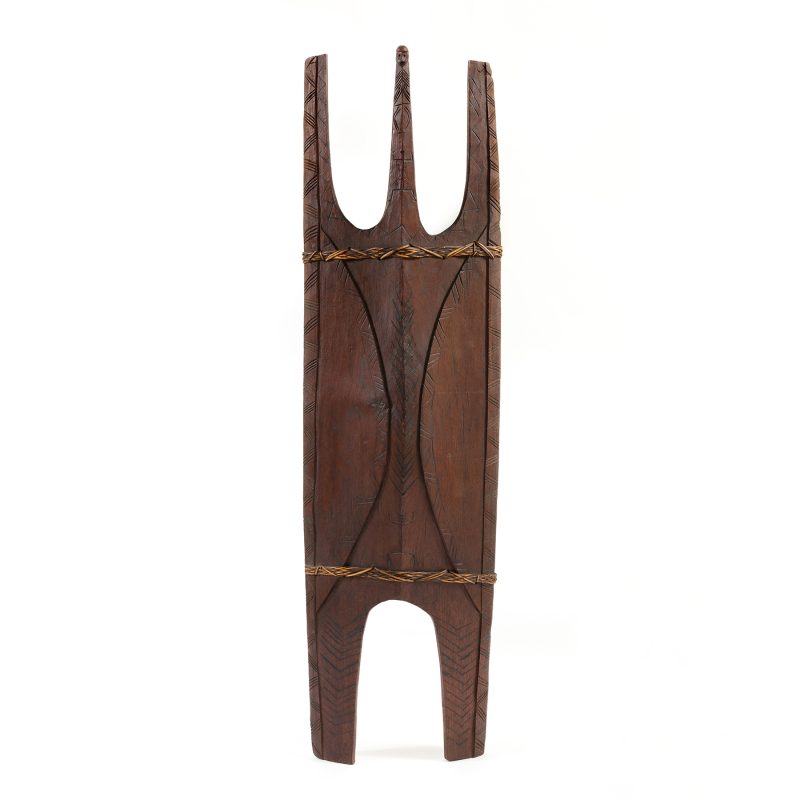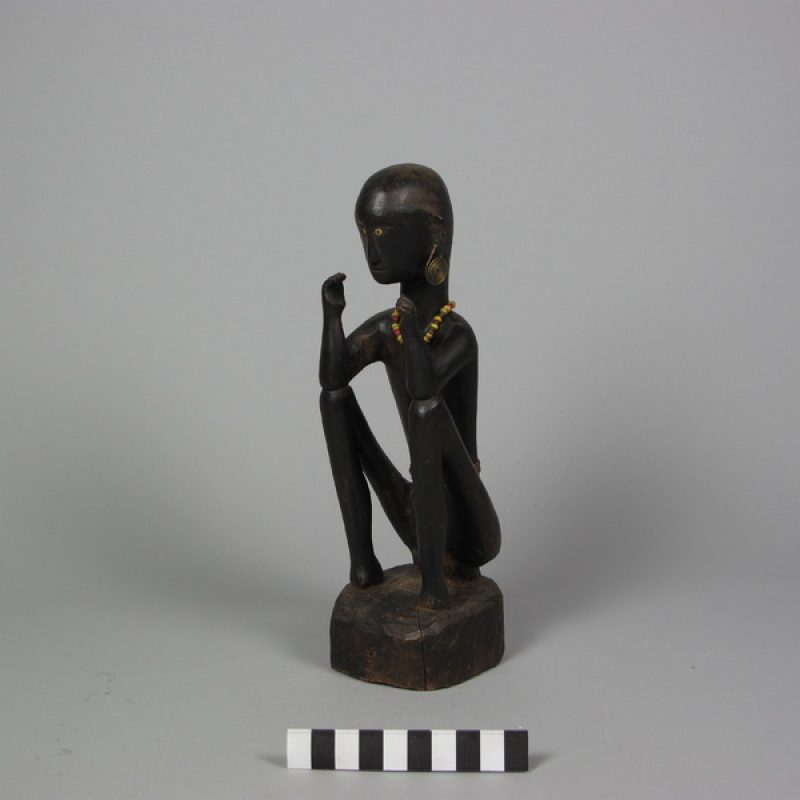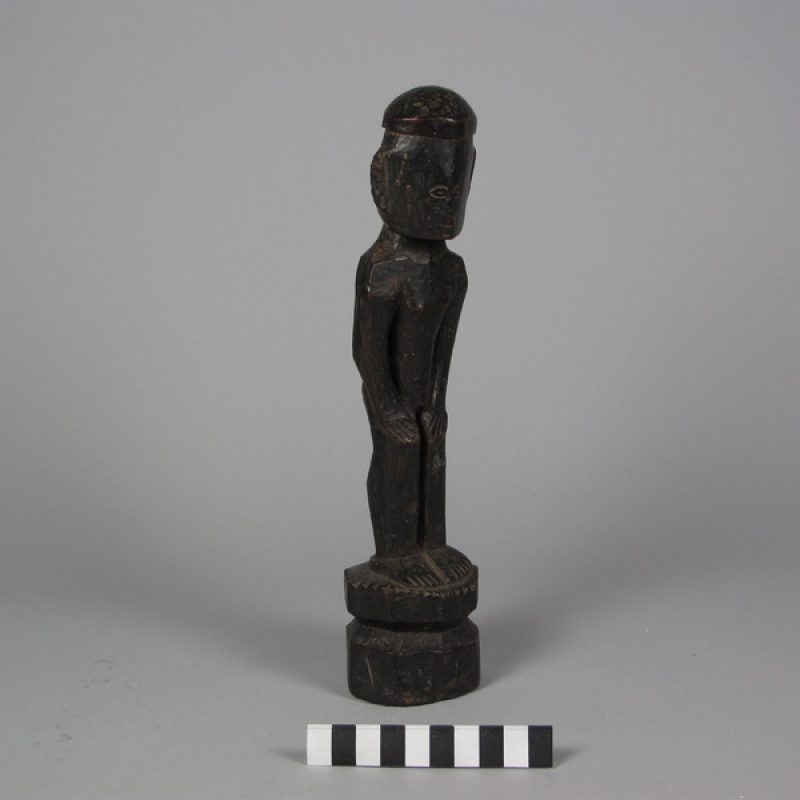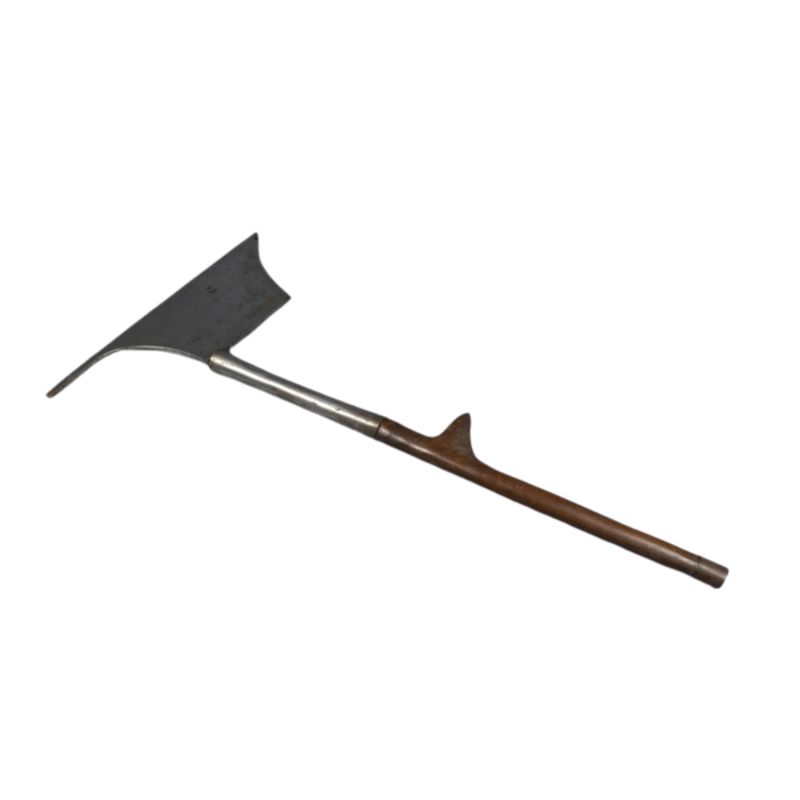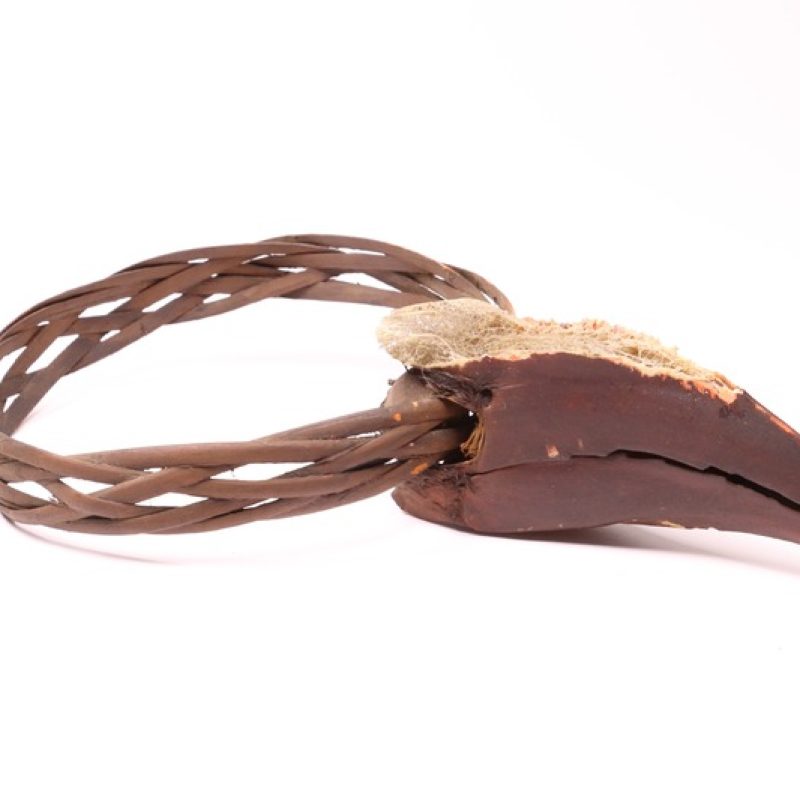Summary of results
This is a spear that can be stylistically attributed to the peoples of Ifugao province, although it was used all over the Cordillera area. It may have been taken from the battlefield during a punitive operation conducted by the Spanish army against the settlements of Talvo (now Talboc), Guinisan, and Ambajogan, in present-day Ifugao province, on 21 February 1888. The collector, José Coronado Ladrón de Guevara, participated in the operation as an officer.
*This artefact is not listed in the museum’s inventories as part of the José Coronado collection.
Chronological reconstruction of provenance
This artefact was probably seized as part of an operation to punish certain populations who were independent of the colonial administration, on 21 February 1888.
In August 1895, and probably earlier, the collection containing the artefact was already in Barcelona. Specifically, in the neighbourhood of Sant Gervasi, where the collector, José Coronado, lived. Between October and November of the same year, a technical commission sent by the Board of Museums of Catalonia examined the collection and, in this occasion, considered that it was not suitable for inclusion in Catalan museums. A year after the loss of the Philippine colony, and perhaps for that reason, it was accepted and finally deposited in the Museo Histórico Arqueológico in 1900.
In 1902, according to the statistical yearbook of the city of Barcelona, the collection was housed in the Museo de Arte Decorativo y Arqueológico, located in the Palacio Real (now the building of the Parliament of Catalonia); in 1903, in the Museo de Objetos Curiosos y Hechos Memorables; and, in 1907, in the Museo de Arte Decorativo y Arqueológico. These last changes were merely nominal, because in practice the artefacts remained in the same place, i.e., in the Ciutadella building.
In 1932, the Museo de Arte Decorativo was dismantled and the collections were divided between the Archaeology Museum of Catalonia (MAC) and the National Art Museum of Catalonia (MNAC) for their creation. The collection probably ended up in the latter, given the fact that documents relating to it—basically reports of artefacts—can still be found in the museum’s archives.
According to one of these reports, before 1941, the collections were transferred from the National Art Museum of Catalonia to the Historical Archive of the City of Barcelona and the Museo Etnográfico. Although no ethnological or ethnographic museum is known to have existed at this time, according to the museum curators, the project already existed in the 1930s.
The artefacts probably remained in the storerooms of the Historical Archive until, before 1949, the Board of Museums transferred the collection to form the Ethnology Museum of Barcelona, where it remains to this day.
Estimation of provenance
To date, it is risky to try to pinpoint the exact time and circumstances in which artefact MEB 134-109 was collected because this style of spear was used interchangeably by many of the different human groups that populated the Great Cordillera area. This type of spear was moved around the territory through exchange and other practices, such as a peace agreement between two conflicting groups, which was symbolized by the handing over of a spear or a battleaxe by the group that took the initiative (Prill-Brett, 2019: 8).
We can speculate on the specific geographical point where the blade was made: at Sapao (present-day Hapao), a day’s walk south of Bontoc village, metal blades were forged and used mainly in the southern parts of the Bontoc demarcation (present-day Mountain Province-Ifugao) (Jenks, 1905: 125). The spear may have come from a punitive operation launched against the villagers of Talvo (now Talboc), Guinisan, and Ambajogan settlements in present-day Ifugao Province in February 1888.
Possible alternative classifications
Gayang, kay-yan, tubay.
Complementary sources
Archives:
Archivo General Militar de Madrid (AGMM): AGMM, 5462.1.
Bibliography:
Negociado de Estadística (1902). Anuari estadístic de la ciutat de Barcelona. Barcelona: Ajuntament de Barcelona. <http://hdl.handle.net/11703/94371>.
Negociado de Estadística (1907). Anuari estadístic de la ciutat de Barcelona. Barcelona: Ajuntament de Barcelona. <http://hdl.handle.net/11703/94376>.
Jenks, A. E. (1905). The Bontoc Igorot. Manila: Bureau of Public Printing. <https://www.gutenberg.org/ebooks/3308>.
Prill-Brett, J. i Tolentino, D. (2019). Tradition and transformation: Studies on Cordillera indigenous culture. Baguio: Cordillera Studies Center, University of the Philippines Baguio.

